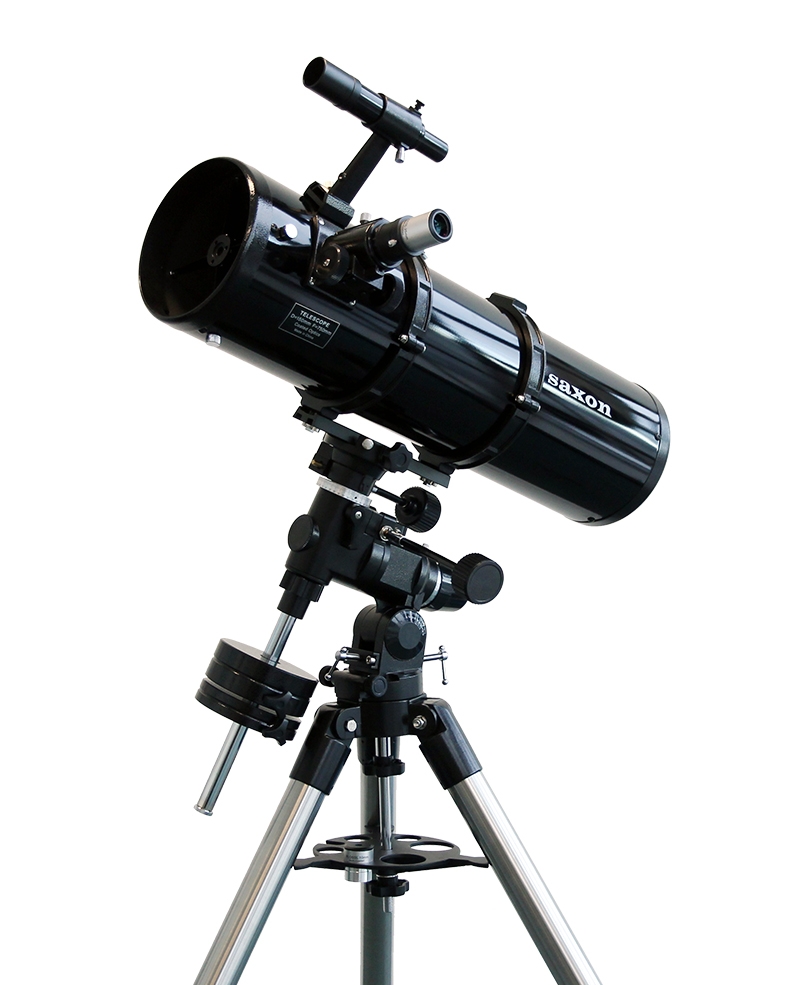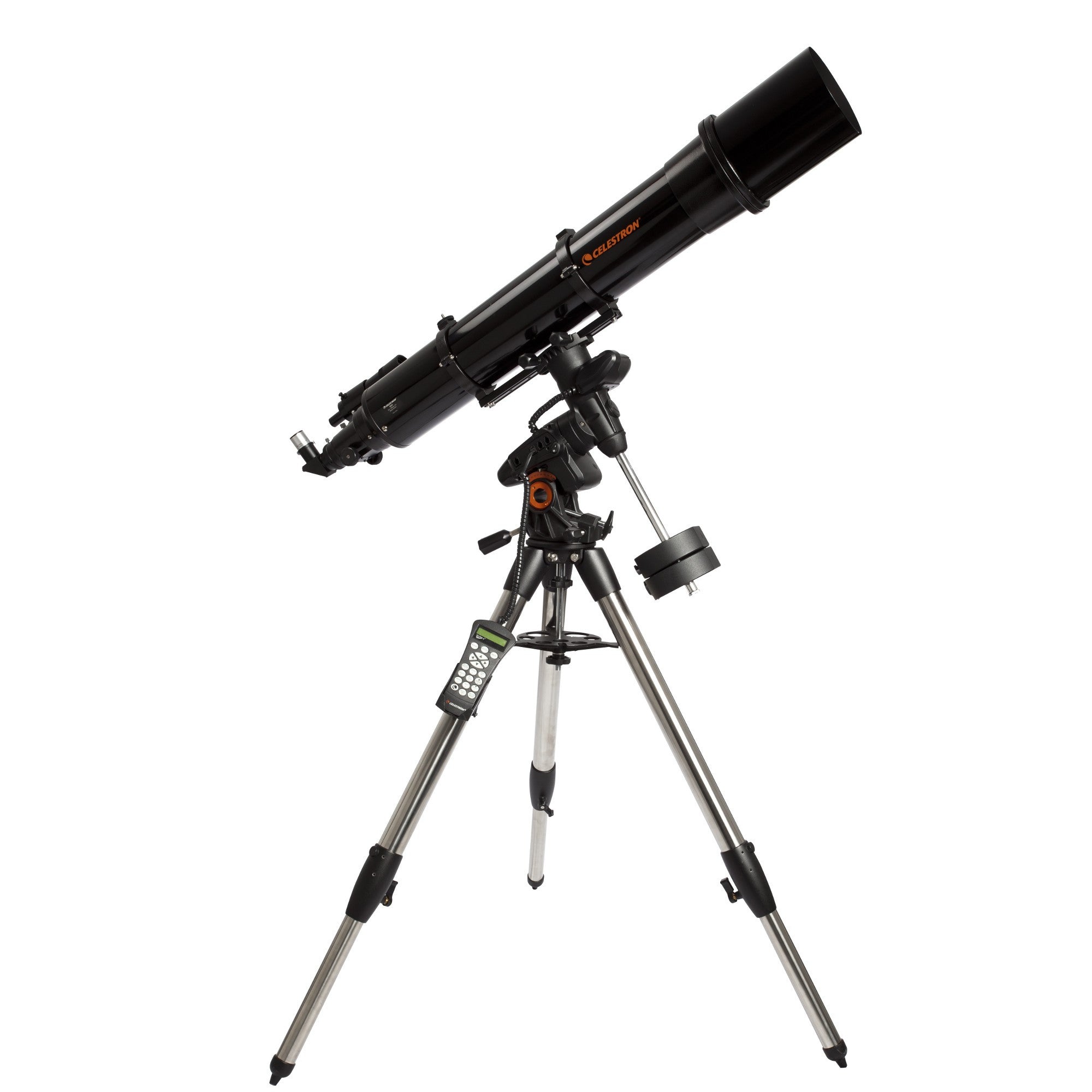

The first type of telescope ever designed was a refractor, designed by an eyeglass maker in the Netherlands in 1608. Telescopes come in a variety of designs, some of which have been around since the 1600s.
 Magnification of an image can be determined by dividing the focal length of the telescope by the eyepiece size, so a 500mm focal length with a 10mm eyepiece would provide a 50x magnification.There are many different types of telescopes available for those interested in exploring the night sky. The lens diameter is simply the width measurement of the front-most lens in the telescope. Focal length is the distance from the telescope lens to the image sensor, like an eyepiece or film. Aperture is the size of the opening the light travels through and affects the appearance at the image plane by allowing certain rays to reach it. Off-Axis: Several reflecting telescope designs exist to prevent the obstruction of incoming light by moving or removing the secondary optics. Many variations of this reflecting design exist with additional hyperbolic or third mirror options. Cassegrain: Laurent Cassegrain is attributed for this design in 1672 making use of a hyperbolic secondary mirror to achieve distant viewing with a short tube. Gregorian: James Gregory published this reflecting telescope design in 1663 in order to better observe terrestrial objects by using a concave secondary mirror. It makes use of a parabolic primary mirror reflecting the light into a flat secondary mirror in order to focus an image. Newtonian: Isaac Newton’s reflector design was completed in 1668. What are the types of reflector telescopes? Technological advancements in mirror and glass grounding and coatings, in addition to digital image processing, are paving the way to further eliminating optical distortions, such as gravitational deformation. This was enough to cause extreme distortion until a correction was implemented by a later space flight crew, resulting in stunning and unparalleled images for decades from deep space. The mirror in the Hubble Space Telescope was slightly off at the edges by just a couple hundredths of a millimeter. Spherical aberration means there is increased light reflection at the edges of the reflector surface, causing a distorted and unfocused image. Also known as chromatic distortion, chromatic aberration in optics means the lens is unable to focus the colors to the same convergence point. Understanding Reflecting Optics: The curved mirror design supports maximum optical viewing of distant images by preventing most spherical aberrations and all chromatic aberrations. Most modern primary mirrors are made from a solid glass cylinder with a vacuum deposited thin layer of aluminum on the surface to create a highly effective reflecting surface. The main reflector is known as a primary mirror, with various designs using additional reflecting surfaces or a digital image sensor to record images. The reflecting technique makes these images possible from vast distances in deep space.
Magnification of an image can be determined by dividing the focal length of the telescope by the eyepiece size, so a 500mm focal length with a 10mm eyepiece would provide a 50x magnification.There are many different types of telescopes available for those interested in exploring the night sky. The lens diameter is simply the width measurement of the front-most lens in the telescope. Focal length is the distance from the telescope lens to the image sensor, like an eyepiece or film. Aperture is the size of the opening the light travels through and affects the appearance at the image plane by allowing certain rays to reach it. Off-Axis: Several reflecting telescope designs exist to prevent the obstruction of incoming light by moving or removing the secondary optics. Many variations of this reflecting design exist with additional hyperbolic or third mirror options. Cassegrain: Laurent Cassegrain is attributed for this design in 1672 making use of a hyperbolic secondary mirror to achieve distant viewing with a short tube. Gregorian: James Gregory published this reflecting telescope design in 1663 in order to better observe terrestrial objects by using a concave secondary mirror. It makes use of a parabolic primary mirror reflecting the light into a flat secondary mirror in order to focus an image. Newtonian: Isaac Newton’s reflector design was completed in 1668. What are the types of reflector telescopes? Technological advancements in mirror and glass grounding and coatings, in addition to digital image processing, are paving the way to further eliminating optical distortions, such as gravitational deformation. This was enough to cause extreme distortion until a correction was implemented by a later space flight crew, resulting in stunning and unparalleled images for decades from deep space. The mirror in the Hubble Space Telescope was slightly off at the edges by just a couple hundredths of a millimeter. Spherical aberration means there is increased light reflection at the edges of the reflector surface, causing a distorted and unfocused image. Also known as chromatic distortion, chromatic aberration in optics means the lens is unable to focus the colors to the same convergence point. Understanding Reflecting Optics: The curved mirror design supports maximum optical viewing of distant images by preventing most spherical aberrations and all chromatic aberrations. Most modern primary mirrors are made from a solid glass cylinder with a vacuum deposited thin layer of aluminum on the surface to create a highly effective reflecting surface. The main reflector is known as a primary mirror, with various designs using additional reflecting surfaces or a digital image sensor to record images. The reflecting technique makes these images possible from vast distances in deep space. 
Reflector telescopes have either one or multiple curved mirrors, also known as parabolic mirrors, to reflect light and form a magnified image of the source object. From a steady mount to remove vibration to each reflector inside, you can build or buy a telescope that exactly matches your needs. The ability to reflect light has paved the way for new discoveries with the opportunity to observe magnified terrestrial or deep space images. Reflector telescopes come in many designs based on the source image to be observed.







 0 kommentar(er)
0 kommentar(er)
